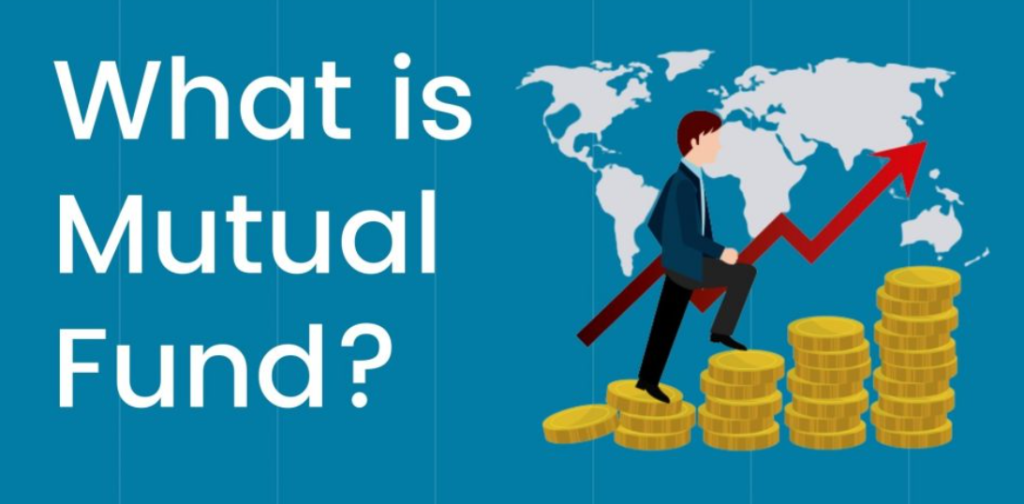Mutual funds are like a basket full of different types of investments, such as stocks, bonds, or other assets. They’re managed by professionals who make decisions on where to invest your money. When you invest in a mutual fund, you’re buying shares of that fund, and your investment grows or shrinks based on how the assets in the fund perform.
Access exclusive content on the moneymortal platform and stay informed with valuable updates.

Key Takeaways:
- Mutual funds pool money from multiple investors to invest in various assets.
- They offer diversification, professional management, and accessibility.
- Investors make money through capital appreciation and distributions.
- Risks include market fluctuations and manager performance.
- Choosing the right fund requires considering investment goals, risk tolerance, and fund characteristics.
How do Mutual Funds Work?
When you join a mutual fund, you’re basically buying a little piece of everything that the fund invests in. So, if the mutual fund invests in 100 different companies, by putting your money in, you own a tiny bit of each of those companies. This helps spread the risk because if one company does badly, it doesn’t hurt you as much since you own lots of others too.
Mutual funds have managers who are like the captains of the ship. Their job is to decide which companies or things the mutual fund should invest in and how much money to put into each. They try to make smart decisions to help grow the money for everyone who’s part of the mutual fund.
Why Do People Invest in Mutual Funds?
- Diversification: Imagine you have a basket filled with different kinds of fruits—apples, oranges, and bananas. If one fruit goes bad, you still have others to enjoy. Similarly, mutual funds work like a big basket filled with different types of investments, such as stocks (pieces of companies), bonds (like loans to governments or companies), and maybe even some other things. By investing in a mutual fund, you’re spreading your money across many different investments. This helps reduce the risk because if one investment doesn’t do well, you have others that might balance it out.
- Professional Management: Think of mutual fund managers as skilled chefs in a restaurant. They’re experts at picking the best ingredients and creating delicious dishes. Similarly, mutual fund managers are like professional investors who study the markets and make smart decisions about where to invest your money. They’re paid to do all the hard work, so you don’t have to worry about choosing the right investments yourself.
- Easy Access: Joining a mutual fund is like becoming a member of a big investing club. You don’t need a lot of money to get started—just like you don’t need a fancy membership fee to join a club. Even if you only have a little bit of money to invest, you can still buy shares of a mutual fund. This makes investing in things like stocks and bonds accessible to regular people who might not have a ton of money to spare.
Types of Mutual Funds

Stock Funds:
- Invest in Companies: Stock funds buy pieces of ownership in companies. When the companies do well, the value of the fund goes up.
- Growth Potential: They aim to grow your money over the long term by investing in stocks of different types and sizes.
- Risk: Since they invest in stocks, which can go up and down a lot, they can be riskier compared to other types of funds.
Bond Funds:
- Invest in Loans: Bond funds lend money to governments or companies. They earn money through interest payments on these loans.
- Income Focus: These funds aim to provide a steady stream of income to investors through regular interest payments.
- Lower Risk: Bonds are generally considered safer than stocks, so bond funds tend to be less risky, but they may offer lower returns.
Balanced Funds:
- Mix of Stocks and Bonds: Balanced funds invest in both stocks and bonds to balance growth potential with stability.
- Income and Growth: They aim to provide both income from bonds and potential for growth from stocks.
- Moderate Risk: Balanced funds are less risky than pure stock funds but riskier than bond funds due to their mixed investments.
Money Market Funds:
- Short-Term Investments: Money market funds invest in short-term, low-risk securities like Treasury bills and commercial paper.
- Safety: They aim to preserve your investment and provide stability, making them very safe compared to other funds.
- Low Returns: Since they invest in very safe assets, money market funds typically offer lower returns compared to other types of funds.
Index Funds:
- Track an Index: Index funds aim to match the performance of a specific market index, like the S&P 500.
- Low Fees: They usually have lower fees compared to actively managed funds because they don’t require much active management.
- Diversification: By holding all the stocks in an index, index funds offer broad diversification across many companies.
Sector Funds:
- Focus on Specific Industries: Sector funds invest in specific sectors like technology, healthcare, or energy.
- High Potential Returns: If a particular sector does well, sector funds focusing on that sector can offer high returns.
- High Risk: They can be riskier than broader funds because they’re heavily concentrated in one sector.
International Funds:
- Global Exposure: International funds invest in companies outside your home country, giving you exposure to foreign markets.
- Diversification: They provide diversification beyond domestic investments, reducing the risk associated with investing in just one country.
- Currency Risk: Since international funds invest in foreign currencies, fluctuations in exchange rates can affect their returns.
Target-Date Funds:
- Automatic Adjustment: Target-date funds automatically adjust their asset allocation based on your target retirement date.
- Gradual Shift: As you get closer to retirement, the fund gradually shifts from higher-risk investments like stocks to lower-risk investments like bonds.
- Simplicity: They offer a simple investment solution for retirement savings, as the asset allocation is managed for you based on your retirement timeline.
Specialty Funds:
- Niche Investments: Specialty funds invest in niche areas like real estate, commodities, or socially responsible companies.
- Cater to Specific Interests: They cater to investors with specific interests or values, such as those interested in environmental sustainability or ethical investing.
- Potential Volatility: Depending on the niche, specialty funds can be more volatile compared to broader funds.
Exchange-Traded Funds (ETFs):
- Traded on Stock Exchanges: ETFs are traded on stock exchanges like individual stocks, offering flexibility for investors to buy and sell throughout the day.
- Diversification: Like mutual funds, ETFs offer diversification by holding a basket of investments, but they’re traded like stocks.
- Low Costs: ETFs typically have lower expense ratios compared to traditional mutual funds, making them cost-effective for investors.
Conclusion
In conclusion, mutual funds offer a convenient and accessible way for individuals to invest in a diversified portfolio of assets managed by professionals. They serve as a tool for achieving various investment goals, whether it’s saving for retirement, purchasing a home, or simply growing wealth over time.
One of the key advantages of mutual funds is their ability to provide diversification, spreading risk across different types of investments. This helps cushion the impact of poor performance from any single investment and provides a more stable return over the long term.
Moreover, mutual funds offer the expertise of fund managers who make investment decisions on behalf of investors, saving them the time and effort needed for researching and managing individual investments. This professional management aims to maximize returns while minimizing risk, although there are no guarantees of success.
However, it’s essential for investors to be aware of the costs associated with investing in mutual funds, including fees like expense ratios, sales loads, and transaction fees. These costs can eat into investment returns over time and should be carefully considered when selecting funds.
Additionally, mutual funds carry risks, including market fluctuations, manager decisions, interest rate changes, liquidity issues, and inflation. While diversification can help manage some of these risks, investors should have a clear understanding of their risk tolerance and investment objectives before investing in mutual funds.
Overall, mutual funds provide an accessible and flexible investment option for individuals seeking to grow their wealth over the long term. By understanding their investment goals, risk tolerance, and the characteristics of different mutual funds, investors can make informed decisions to build a diversified investment portfolio tailored to their needs.
FAQ’s
How Do I Choose the Right Mutual Fund?
Choosing the right mutual fund involves understanding your investment objectives, risk tolerance, and time horizon. Determine whether you’re investing for short-term goals like buying a house or long-term goals like retirement. Consider if you’re comfortable with the ups and downs of the market or prefer more stability.
Look into the fund’s past performance to see how it has performed in different market conditions. Assess the fees associated with the fund, including expense ratios, sales loads, and transaction fees. Lower fees generally mean more money stays in your pocket.
Evaluate the fund’s diversification across different assets like stocks, bonds, or international investments. A well-diversified fund can help spread risk and mitigate losses. Finally, consider the expertise of the fund manager and their track record in managing similar funds.
What Are the Risks Associated with Investing in Mutual Funds?
While mutual funds offer benefits like diversification and professional management, they also come with risks. Market risk refers to the possibility of losing money due to fluctuations in the overall market. Economic downturns or market crashes can lead to losses in your investment.
Manager risk arises if the fund manager makes poor investment decisions or fails to adapt to changing market conditions. Interest rate risk affects bond funds, as rising interest rates can cause bond prices to fall.
Liquidity risk occurs when a fund invests in assets that are difficult to sell quickly, potentially impacting its ability to meet redemption requests from investors. Finally, inflation risk refers to the possibility that the returns generated by the mutual fund may not outpace inflation, leading to a decrease in purchasing power over time.
Understanding these risks and how they apply to your investment goals is crucial when investing in mutual funds. Diversification across different types of funds can help mitigate some of these risks.
What Are the Costs Associated with Investing in Mutual Funds?
Investing in mutual funds comes with various costs that can impact your returns. These costs include expense ratios, which are annual fees charged as a percentage of the fund’s assets. Lower expense ratios mean less money is deducted from your investment each year.
Some mutual funds charge sales loads, which are fees paid when buying or selling shares. Front-end loads are charged when buying shares, while back-end loads are charged when selling. No-load funds don’t charge these fees.
Transaction fees may apply if you buy or sell mutual fund shares through a broker. Additionally, actively managed funds often have higher management fees compared to passively managed index funds or ETFs.
Understanding these costs is essential to ensure they don’t significantly reduce your investment returns over time.
